How to Support Garden Flowers to Keep Them from Falling Over
Did you know that strong winds and heavy rains can cause heavy damage to your tall plant’s beautiful blooms? Even heavy flowers can bend and break from their own weight if they’re not protected. I’ll show you the different ways to support your garden flowers to keep them from falling over.
If you grow tall and bulky flowers in your garden, you’ll need to provide both strength and extra support. Not only will you keep your flowers healthy and beautiful through the growing season, but the flower stems will grow longer and straighter when supporting your plants. Supporting your flowers will create the perfect cut flowers.
It’s important to take a proactive approach and set up a sturdy support system for your tall plants BEFORE any damage takes place.
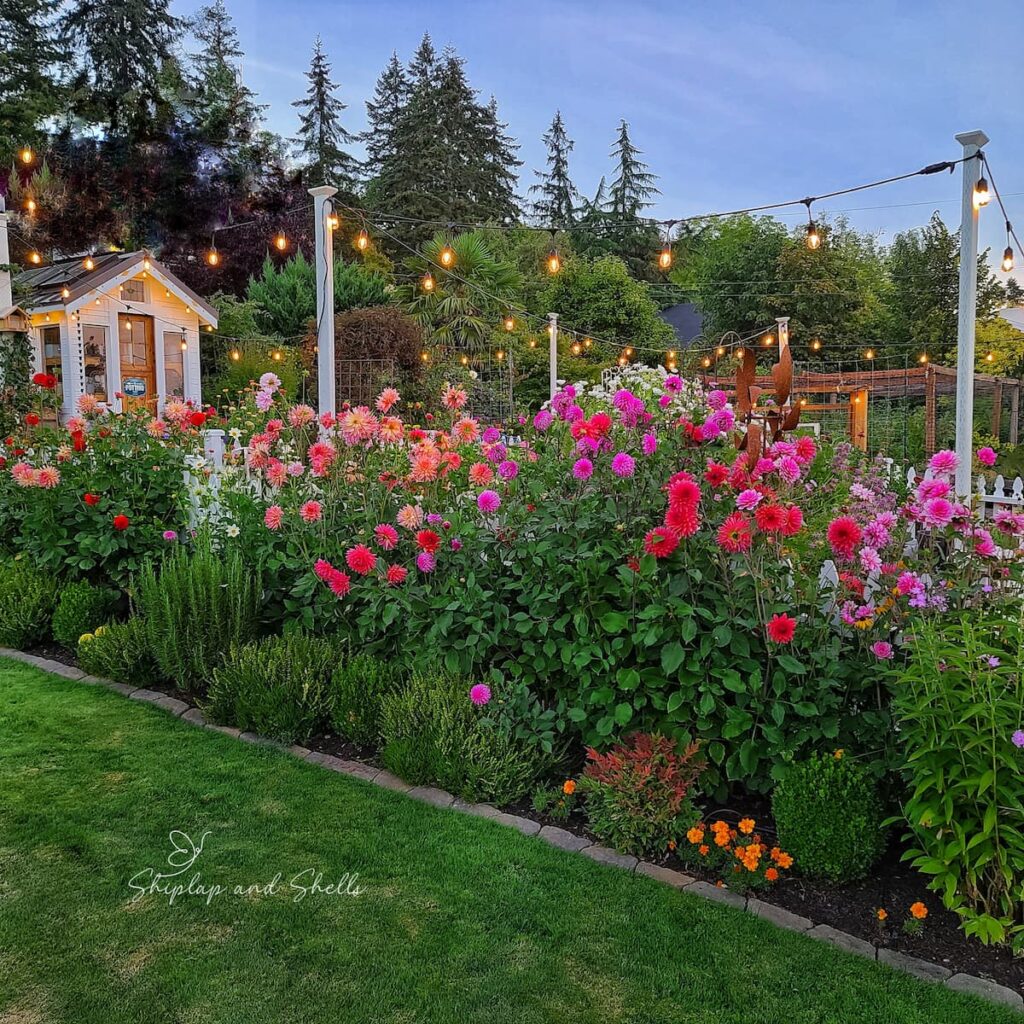
As an Amazon affiliate, I earn a commission from qualifying purchases at no additional cost to you. My blog also features other affiliate links for your convenience. Click here to read my privacy policy.
Benefits of Supporting Tall Garden Flowers

Supporting tall garden flowers can provide several benefits, both for the plants themselves and for the overall appearance and health of your garden.
Here are some of the benefits of supporting tall garden flowers.
Prevent Toppling and Damage
Top-heavy plants, such as hollyhocks, dahlias, and certain varieties of sunflowers are prone to bending, especially when they have larger flower heads or are exposed to rainy and windy weather.
By providing support, such as stakes or cages, you can prevent these plants from toppling over and becoming damaged.
Encourage Upright Growth
Supporting tall flowers helps maintain their upright growth habit, ensuring they grow straight and tall.
This is especially important for the type of plant that tends to lean or sprawl. Proper support keeps them in an ideal position, maximizing their exposure to sunlight and improving their overall appearance.
Promote Air Circulation
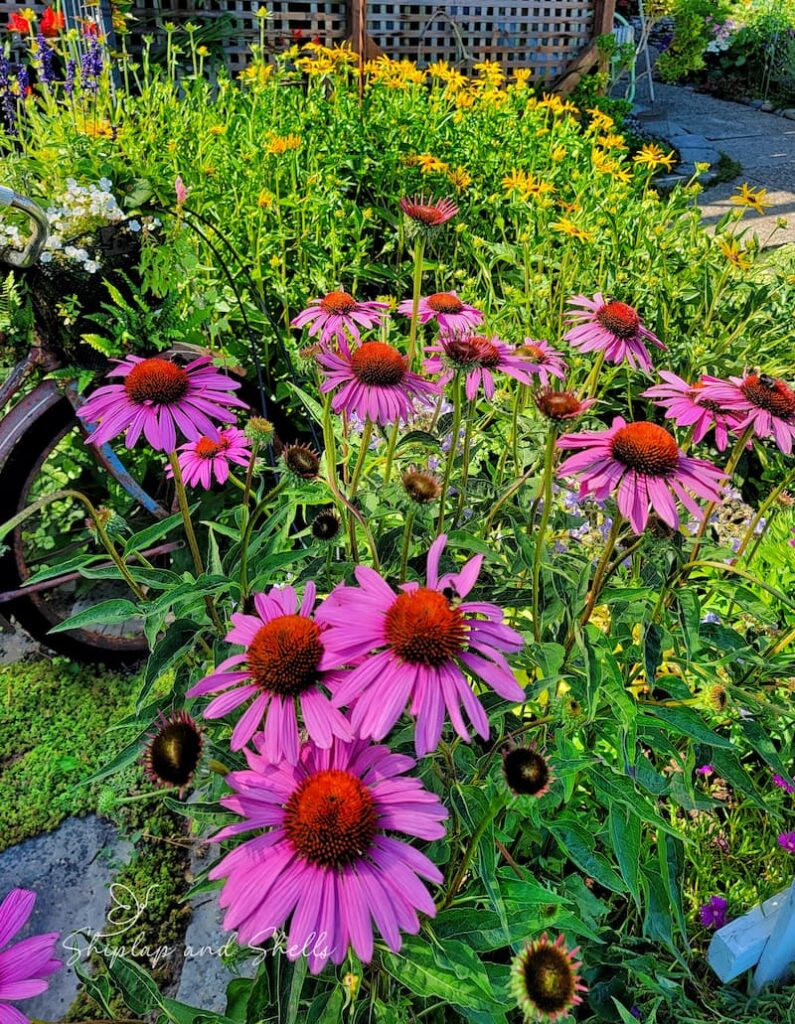
When tall flowers are properly supported, air can circulate freely around the plant, reducing the risk of diseases caused by stagnant air and excess moisture.
Good air circulation helps prevent fungal infections, mildew, and other issues that thrive in humid or crowded conditions.
Enhance the Garden’s Appearance
Climbing plants such as clematis, sweet peas, and climbing roses are the perfect vertical focal points in your outdoor spaces when using support structures such as a garden trellis or arbor.
Protect Neighboring Plants
Some tall flowers may have spreading growth habits which can overshadow or mother nearby plants in garden beds.
By supporting these flowers, you can contain their growth and ensure they don’t shade or compete with smaller plants.
Low Maintenance Garden
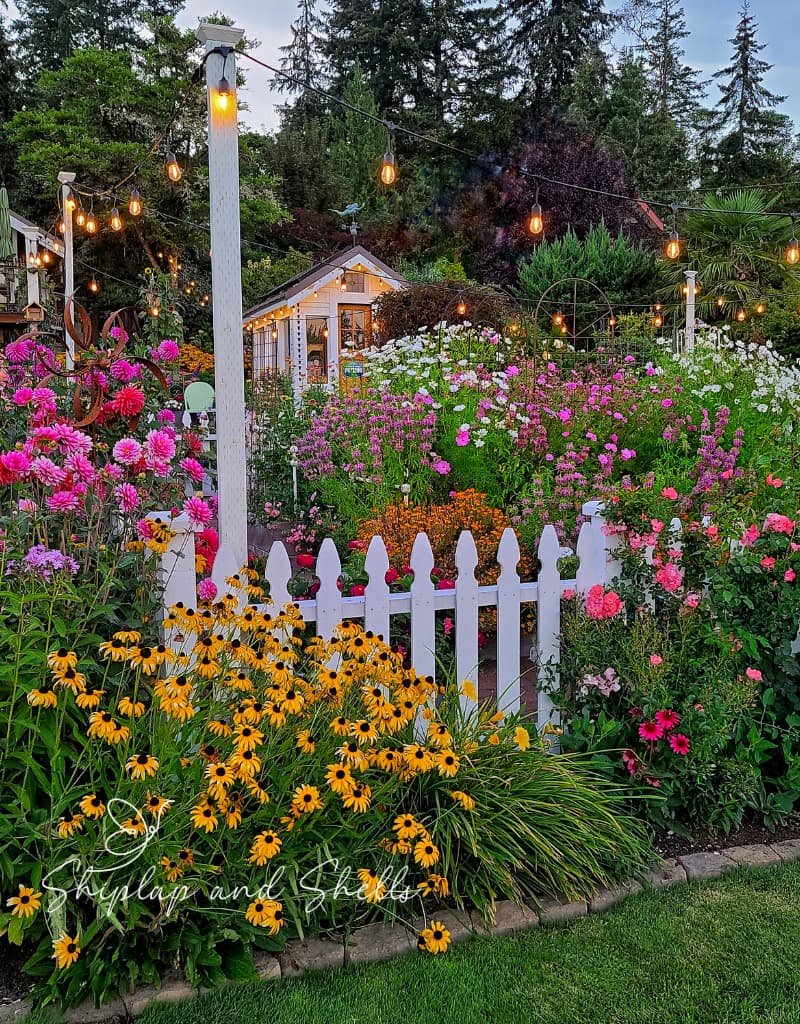
Pruning, deadheading, and harvesting become much more simple when plants are kept upright and accessible.
Managing maintenance projects such as irrigation, mulching, and pest control is much easier when tall plants are growing upright from sturdy plant supports.
Extend the Blooming Period
By supporting tall flowers and preventing damage to your plants, you can prolong their blooming period. When plants remain healthy and intact, they can continue to produce flowers for a more extended period.
Methods to Support Plants and Keep Them From Falling Over
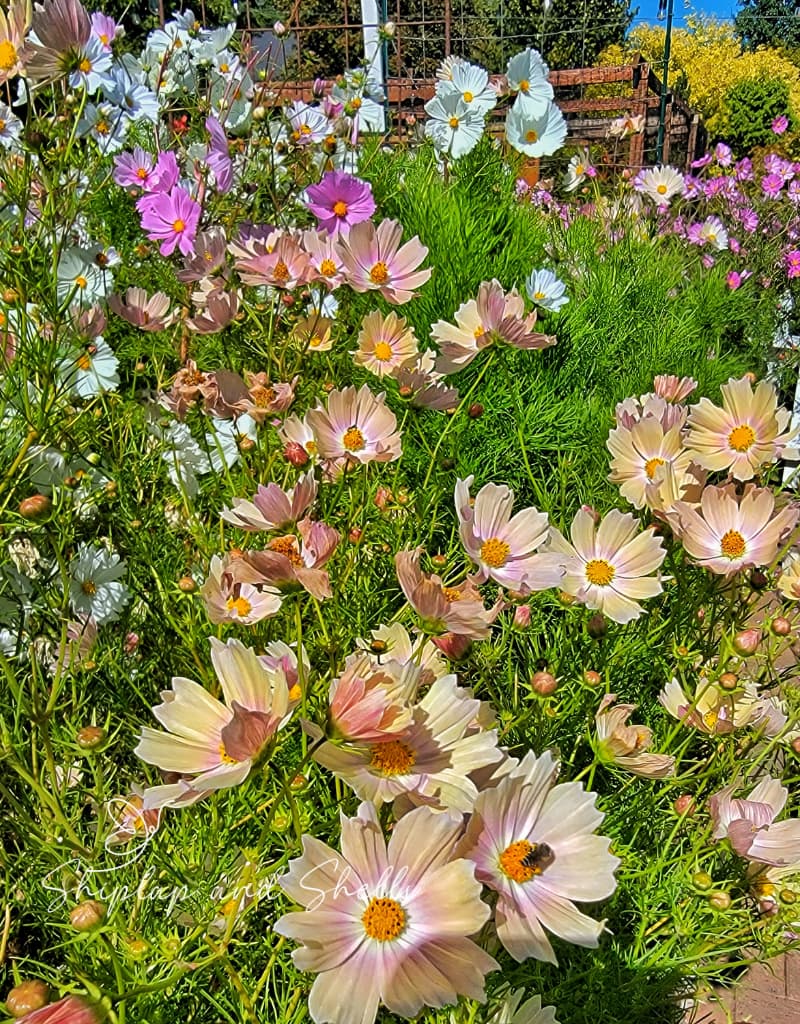
You can choose from a variety of support methods to keep your flowers from falling over. I use all of these in my flower garden.
1. Staking

A single plant stake is the most common method to support your tall garden plants.
There are a variety of simple stakes you can use including wooden, metal, bamboo canes, and plastic stakes.
Drive a 3-4 foot stake about 6 inches into the ground and a couple of inches from the base after the plant is 1 foot tall. Be careful not to damage the roots of the plant.
Use garden twine, string, or twist ties to tie the tall stems to the stake. Continue to tie the stem to the support stake as it grows every 6-8 inches.
2. Corralling

Building a corral around an entire bed of tall and bulky plants like dahlias or cosmos is an easy way to support them.
Drive metal or heavy wooden stakes into the ground 4-5 feet above ground at each of the 4 corners of the bed. Additional stakes should be placed every 8-10 feet along the sides. Run string or twine 3 feet above ground around the perimeter of the stakes, pulling tightly.
For plants that are higher than 4 feet, use a second layer of twine that is spaced about 1 foot higher than the first layer.
3. Netting
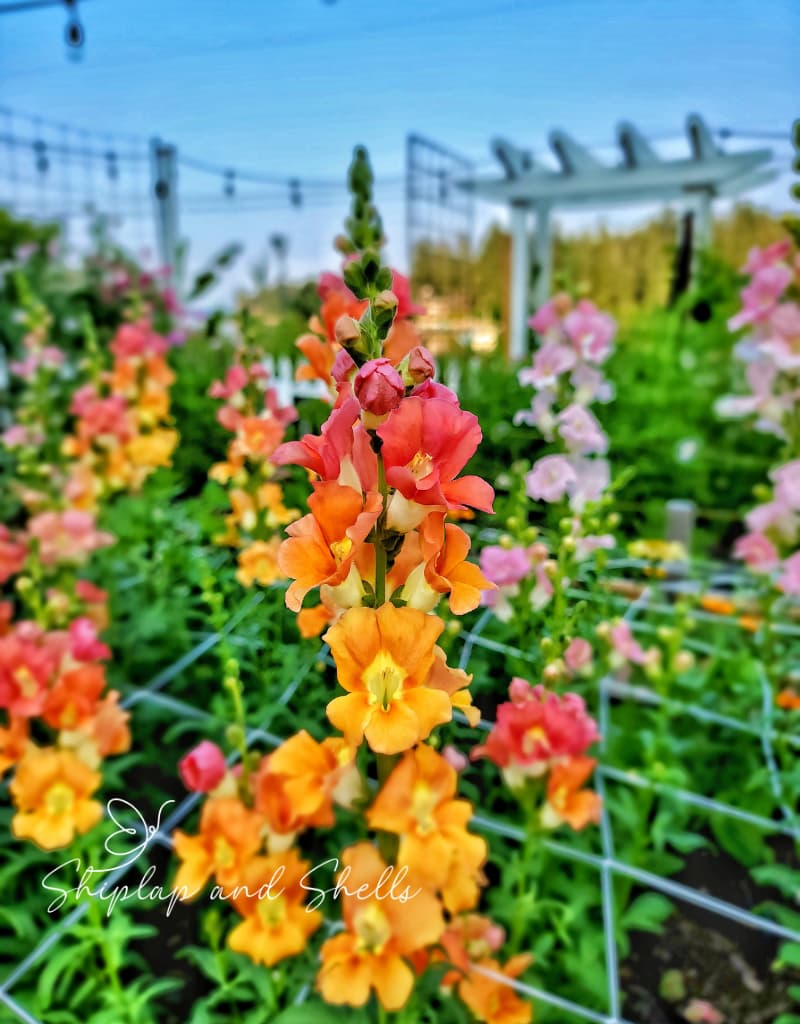
Use a mesh or plastic netting with 6-inch squares for plants that produce a large amount of branching stems such as snapdragons or zinnias.
Pound metal or heavy wooden stakes at each corner and the perimeter of the garden bed stick up about 4 feet and are spaced about 8 feet apart. The netting should be about 18 inches above the ground.
Secure the netting by pulling it tight over the stakes or by using zip ties to attach it to the stakes. The netting should be suspended over the plants.
This netting should be set up at the latest before the plant reaches a foot. The plant will grow up through the netting square as it grows taller and will support it through rain and high winds.
4. Trellising

Support active and fast-growing climber plants such as sweet peas, pole beans, and clematis with a strong trellis or something similar.
You can create a trellis by using 6-foot tall wooden or metal posts spaced 8-10 feet apart down the row and attaching metal fencing such as chicken wire to the posts.
As the plant vines grow to a foot, secure them to the fencing with twine. Add a new layer of twine up the fence as often as once a week as you see new growth.
5. Cages and Grow-Through Supports

Tomato, wire, and peony cages or grids are a great source of support for top heavy blooming flowers such as peonies.
Cages are a great type of support for tall garden flowers and can be used to create a trellis effect around the stem.
Tall Flowers That Benefit from Support
Sunflowers
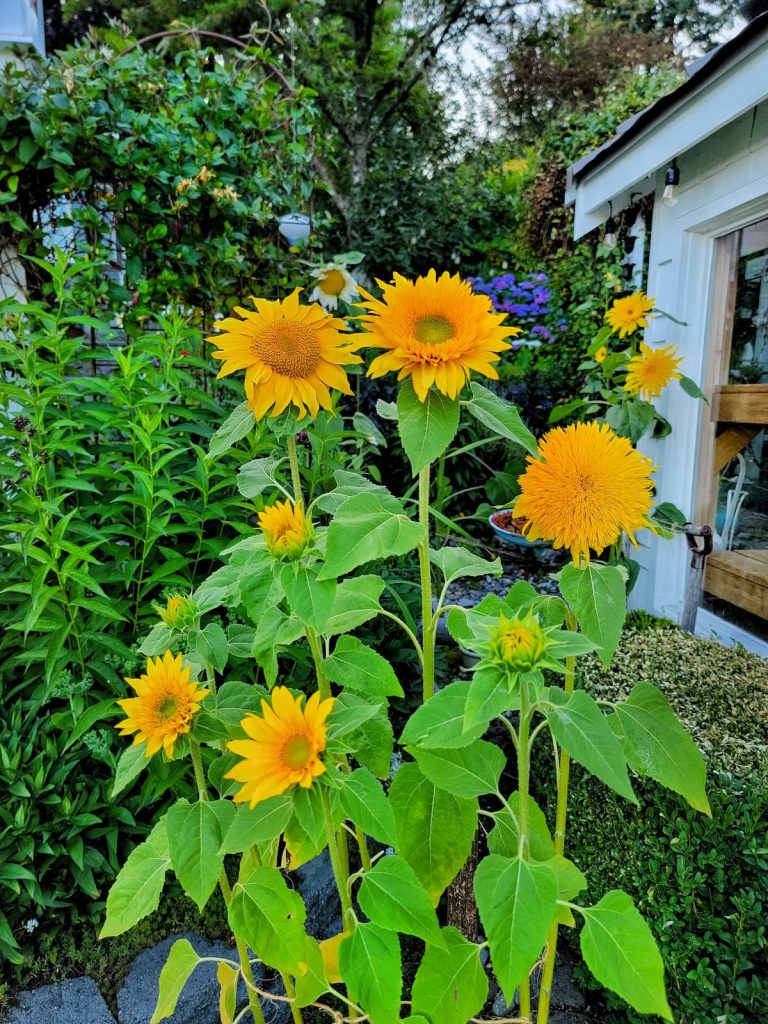
With their towering stems and large, sunny flower heads, taller varieties of sunflowers often need stakes or trellises to stay upright.
Gladiolus
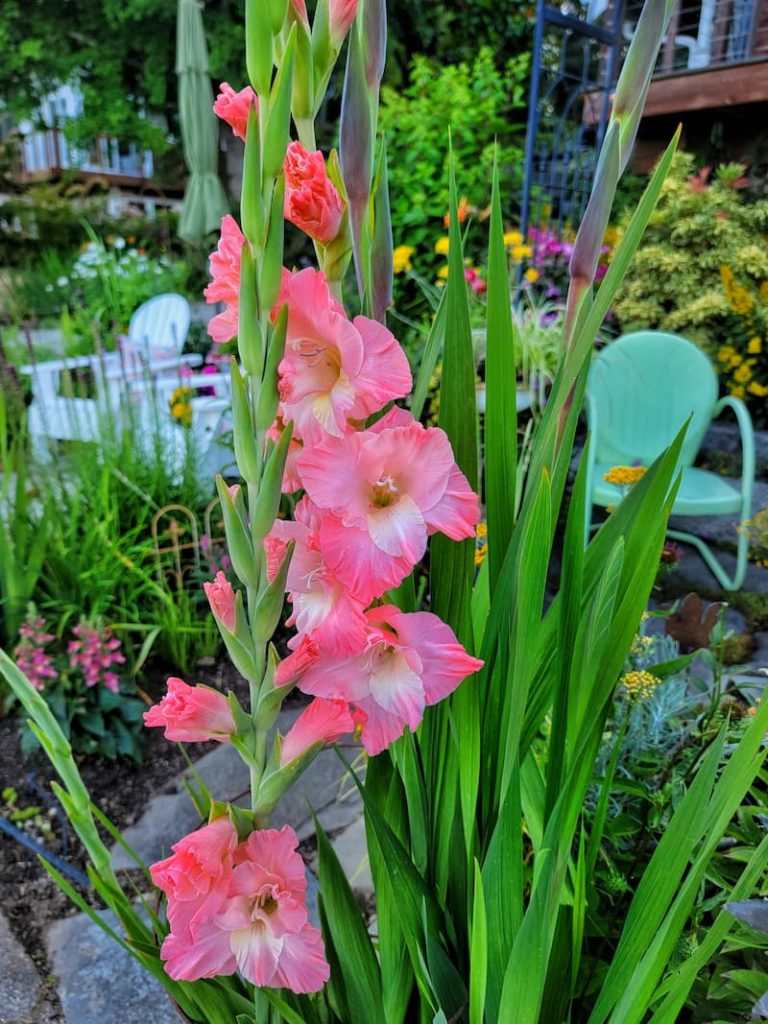
Gladioli are tall flowering plants with sword-shaped leaves and vibrant blooms arranged along a tall stem. They usually require support to prevent them from bending or snapping.
Echinacea

Also known as coneflowers, these large, daisy-like flowers with tall sturdy stems, but the weight of their blooms can cause them to drop so staking is recommended.
Hollyhock
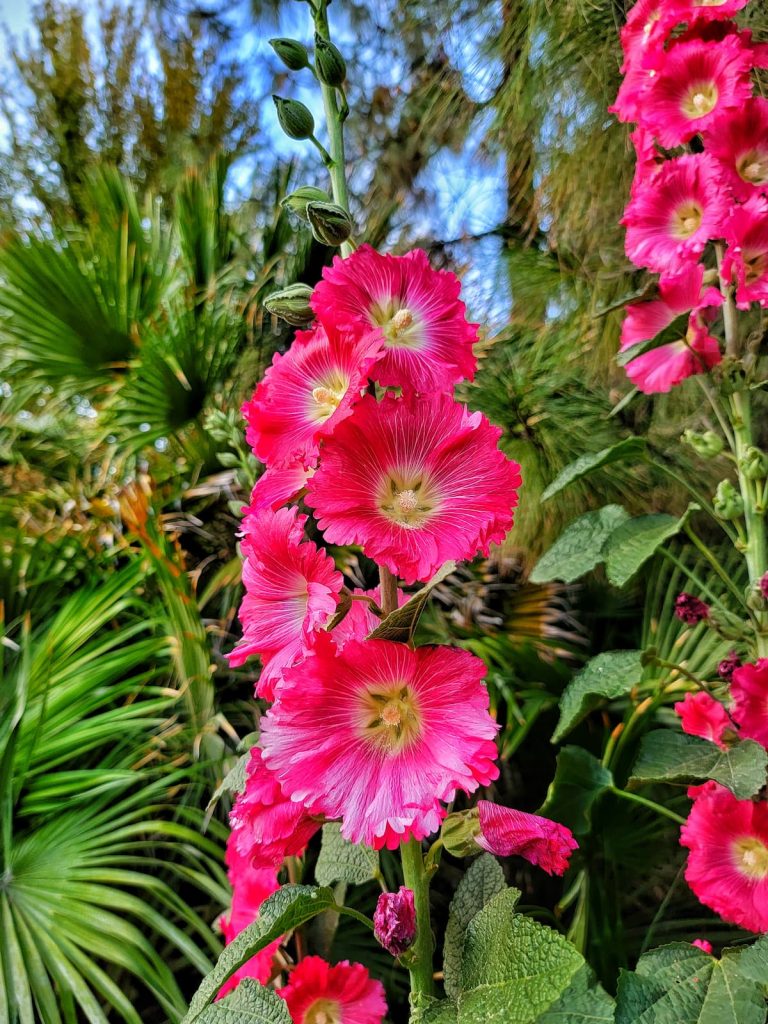
These tall biennials or short-lived perennials produce tall stalks often needing to be supported to keep them upright.
Rudbeckia
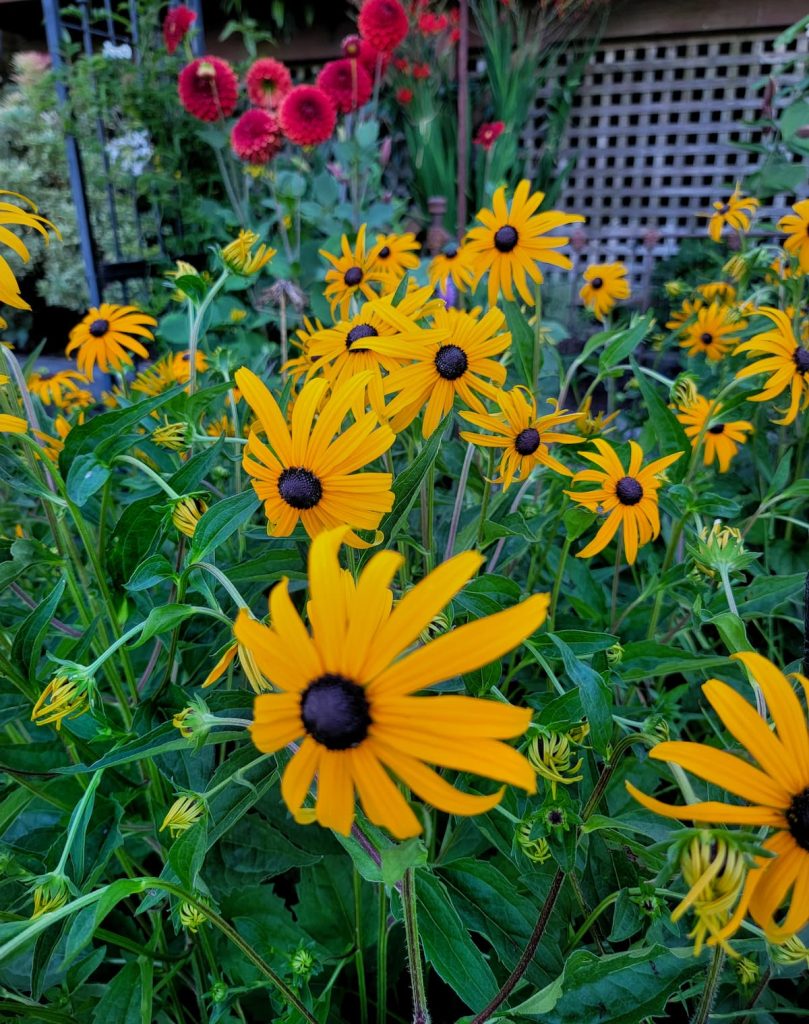
Also known as black-eyed Susans, these yellow, daisy-like flowers have tall stems and may require staking depending on how tall they get.
Cosmos
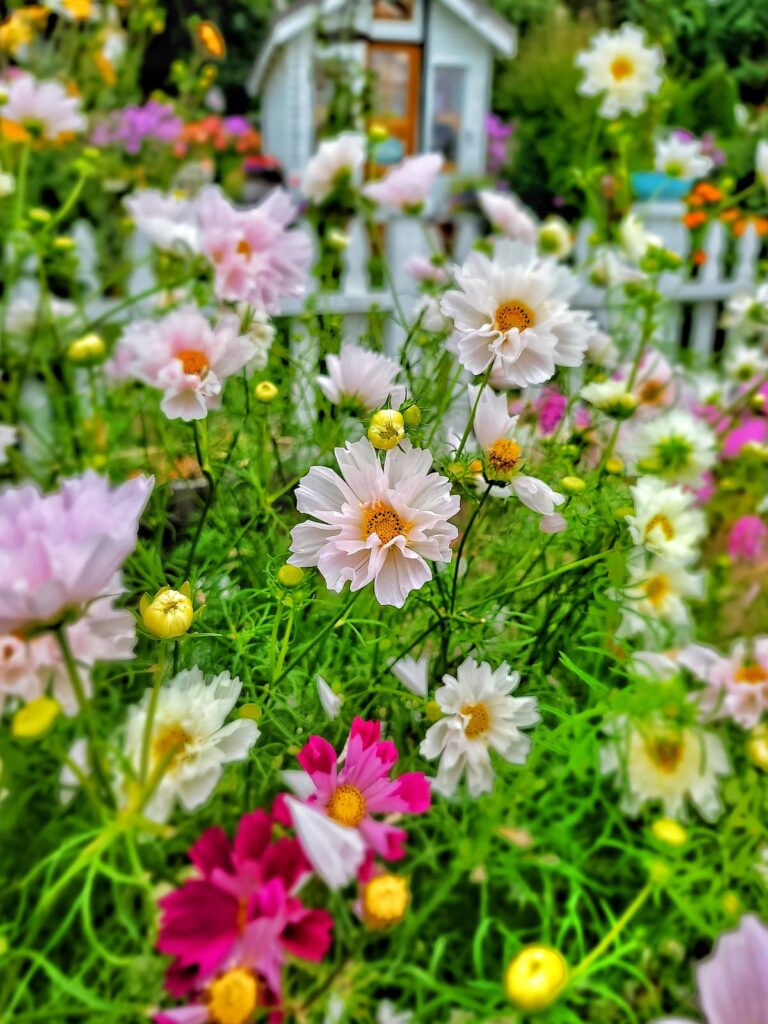
This whimsical annual flower with delicate, feathery foliage and tall stems can easily topple over from wind or heavy rains. The corral method or netting are good support choices for cosmos.
Sweet Peas
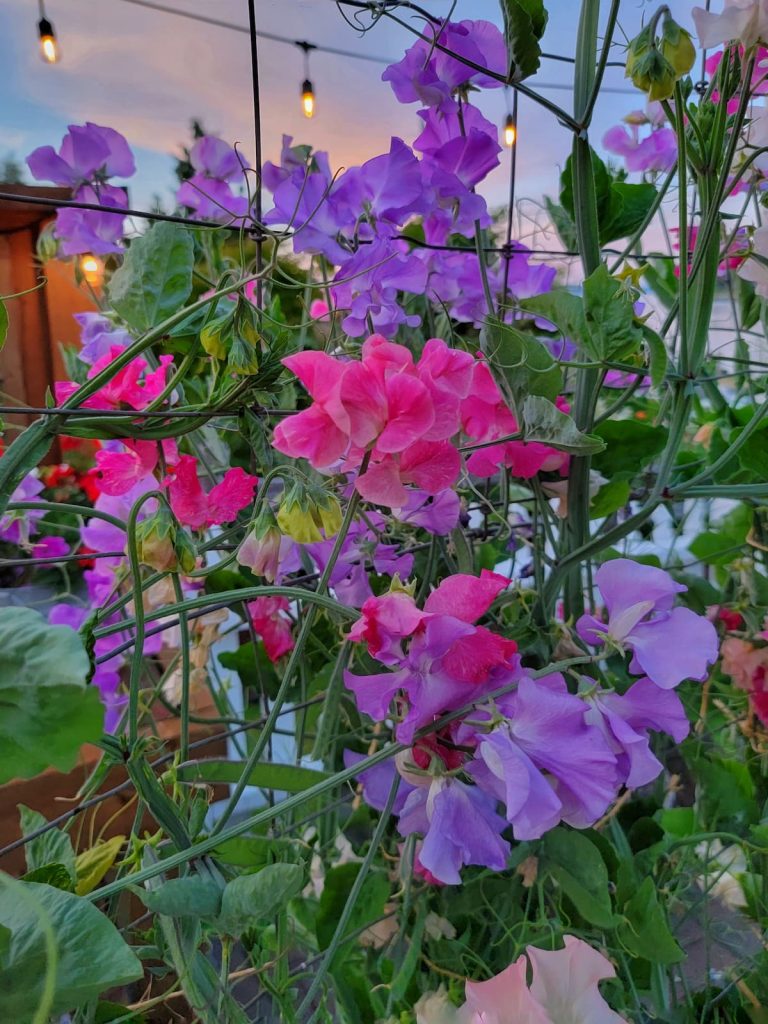
These sweet pea vines can be very delicate and their stems aren’t very strong so sweet peas need trellis support so they don’t flop over or break.
Dahlias
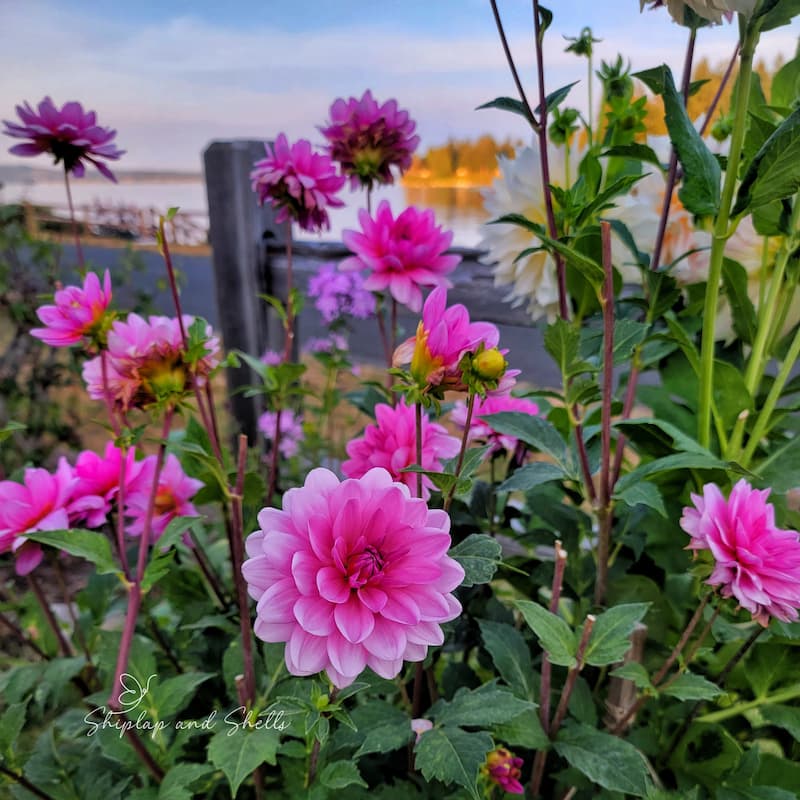
These perennials produce large flowers that can get very heavy, especially the dinner plate variety. Dahlia flower stems can be weak and thin, prone to bending.
Snapdragons
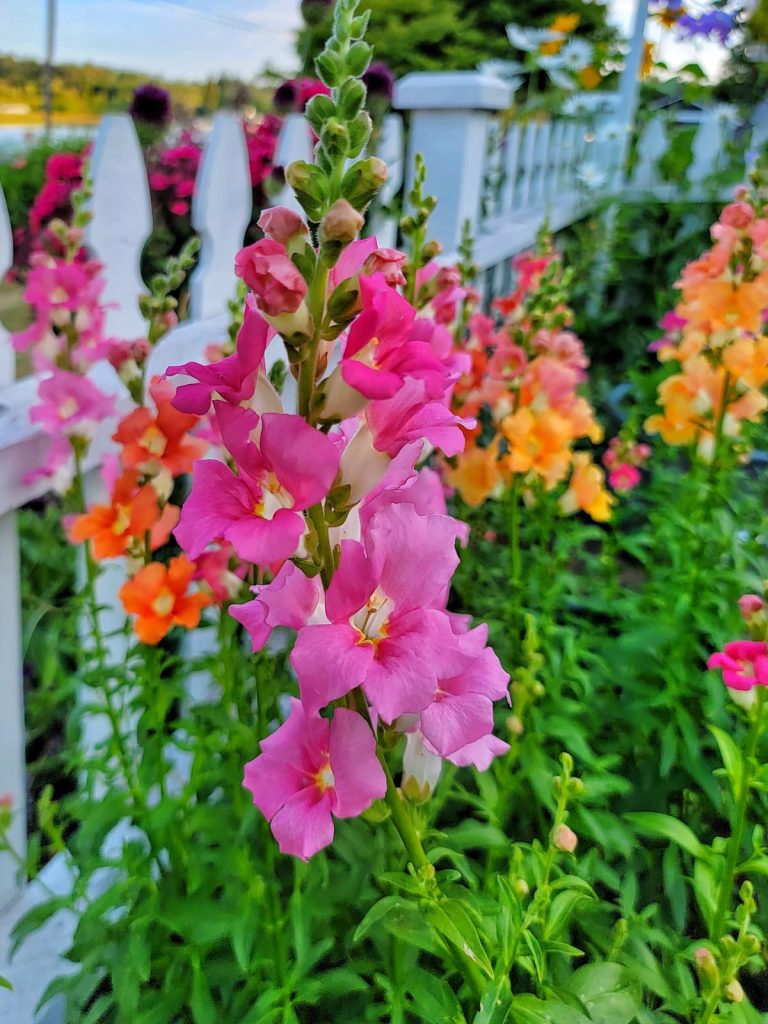
Because they grow quite tall and develop long flower spikes, snapdragons do well when supported by netting as they become top-heavy and prone to bending over.
Zinnias
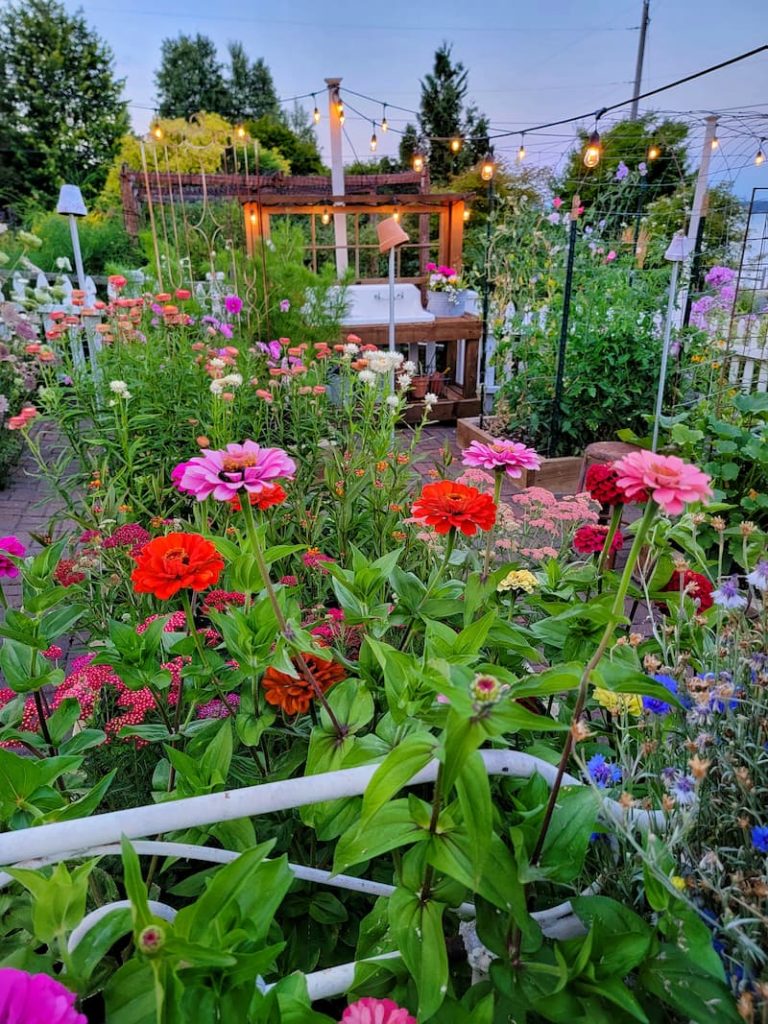
Tall zinnias with heavy flower heads can become top-heavy and prone to bending or flopping over, especially during rain or strong winds.
Shasta Daisies
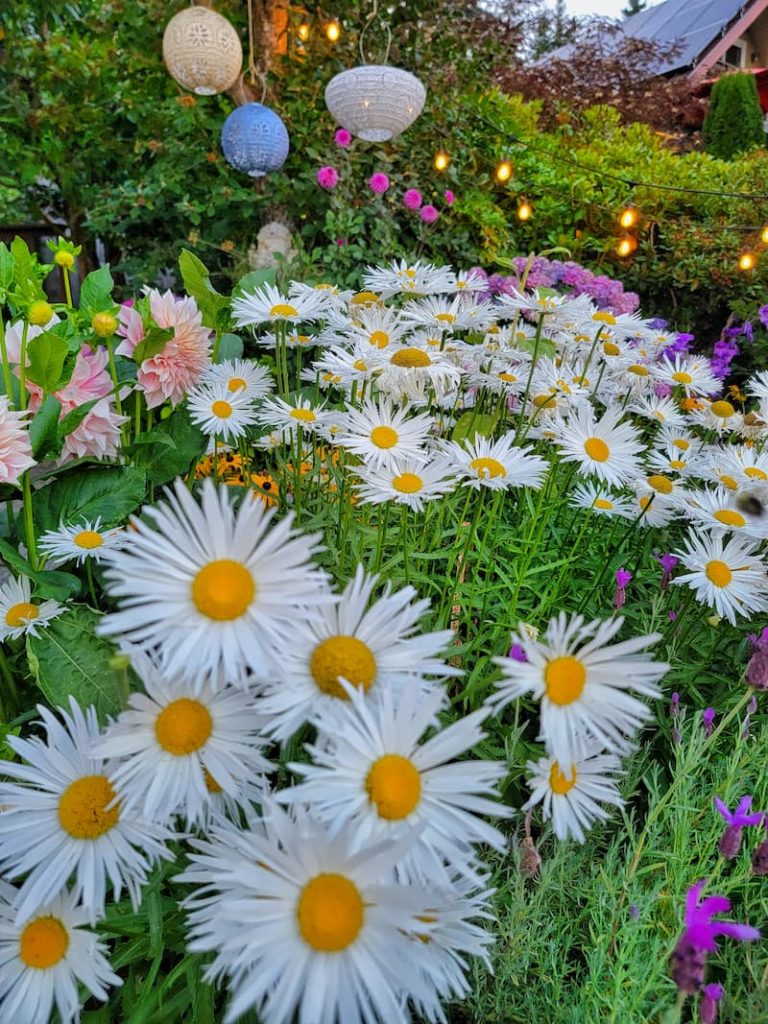
Staking daisies early will help keep the weight of the flower heads and weak stems from pulling the plants over, especially during bad weather.
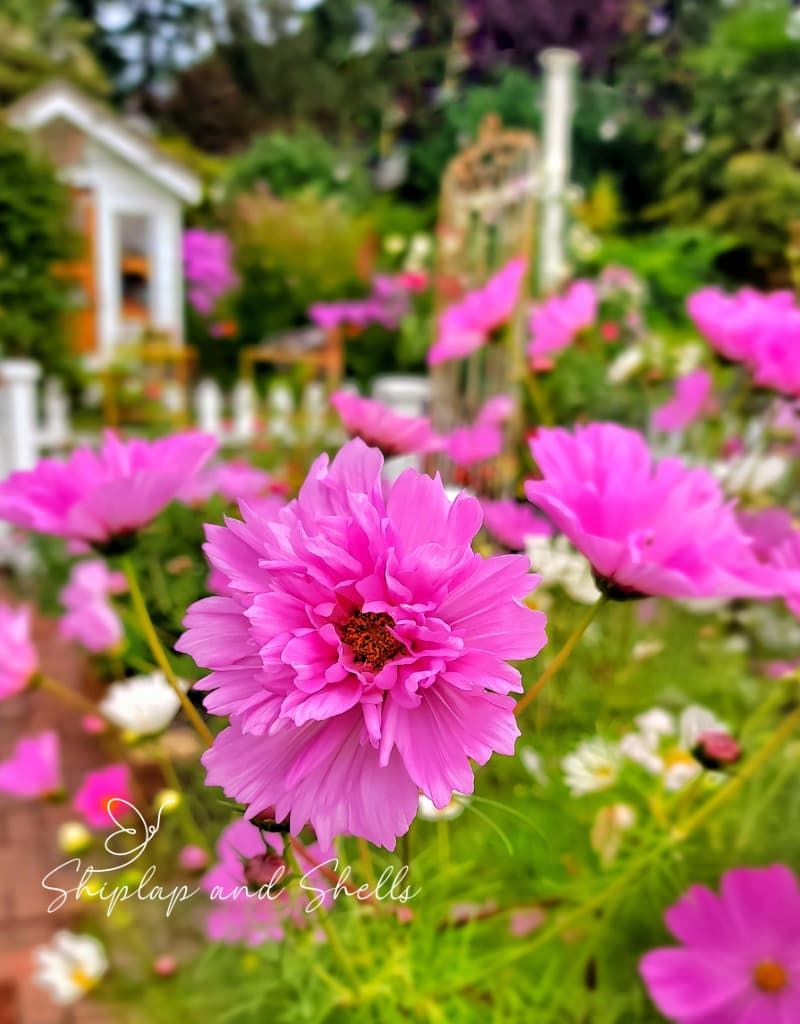
Providing the necessary support early in the growing season is important to avoid damaging the plants later. Stakes, cages, trellises, or netting can keep these tall flowers from falling over and breaking.
If you have any questions or have a message, I’d love to hear from you. Leave a comment below. And be sure to share this blog post link with anyone who may find these gardening tips useful.
Until next time,
Happy Gardening!

I’m a self-taught hobby gardener. Everything I share on my blog is my opinion and what has worked for me.
Follow Me for More Inspiration
Shop my Amazon Storefront, LTK sources, and my favorite home decor, garden, and lifestyle products. When you purchase from one of my links, I earn a small commission, which helps me continue sharing all the content you expect on my blog.
Be sure to follow me on Pinterest, Instagram, Facebook, TikTok and LIKEtoKNOW.it. Do you like gardening? Join my Facebook Gardening Tips & Tricks group.

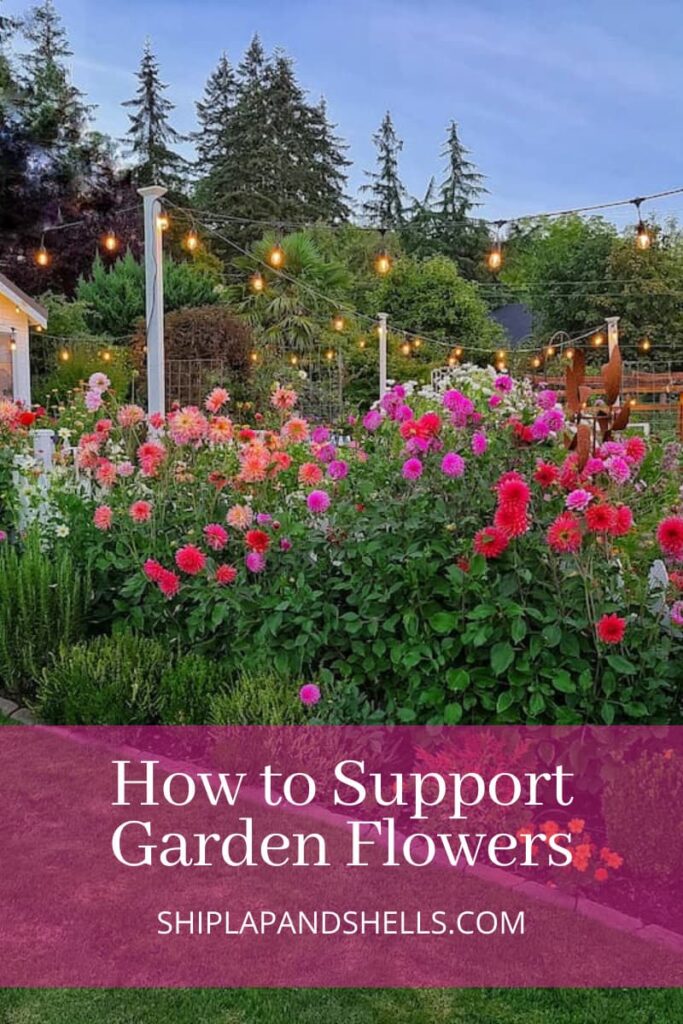
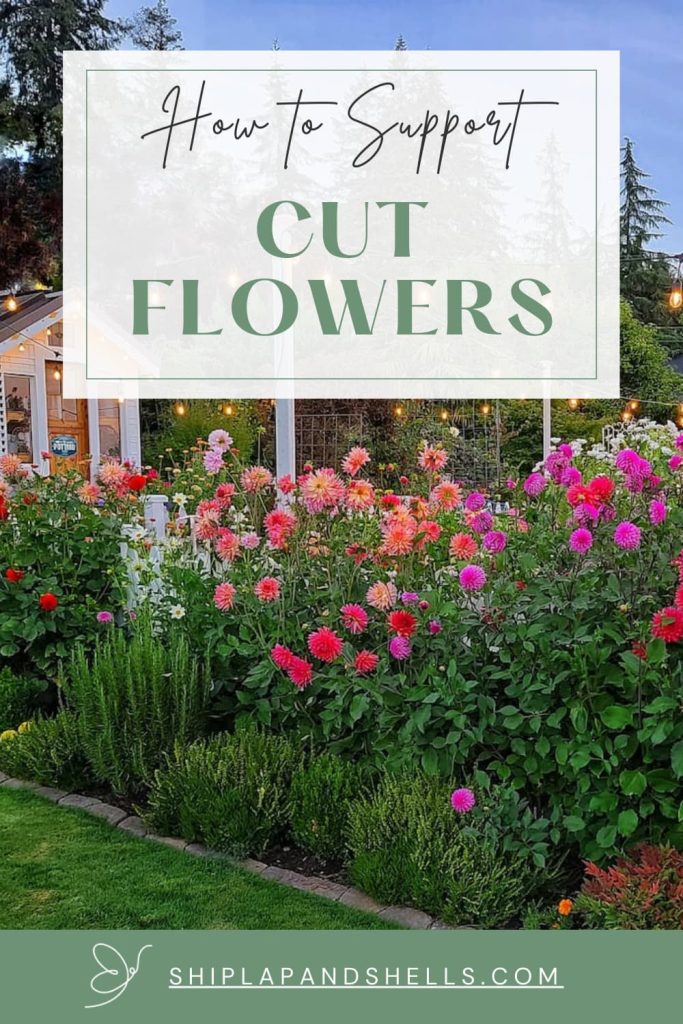


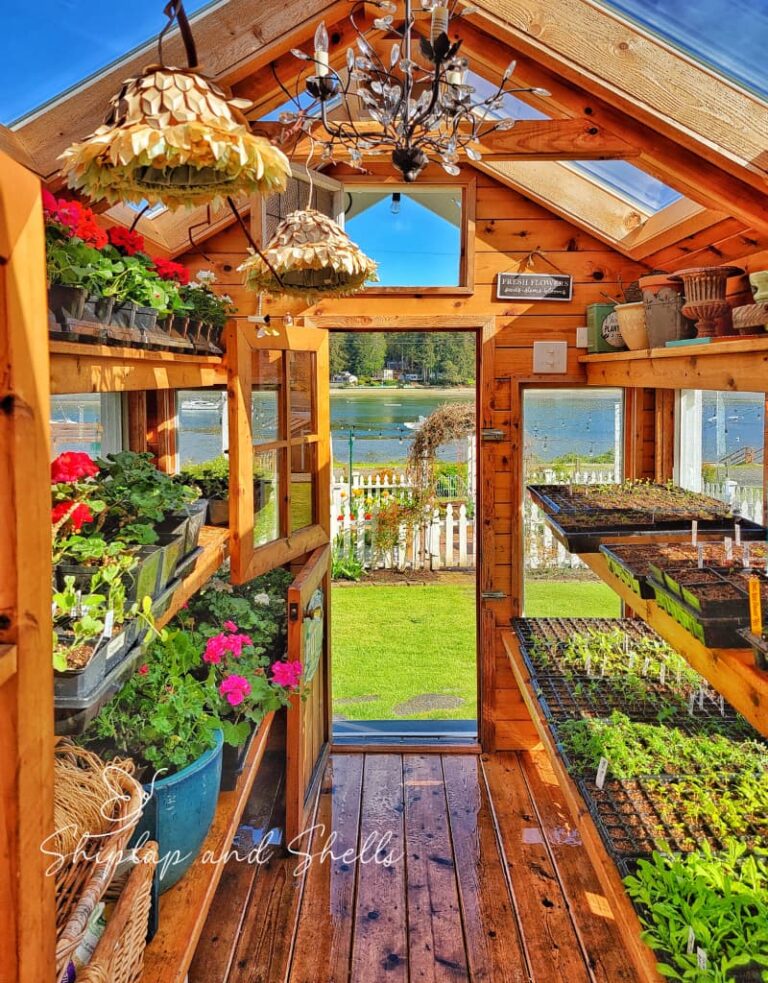
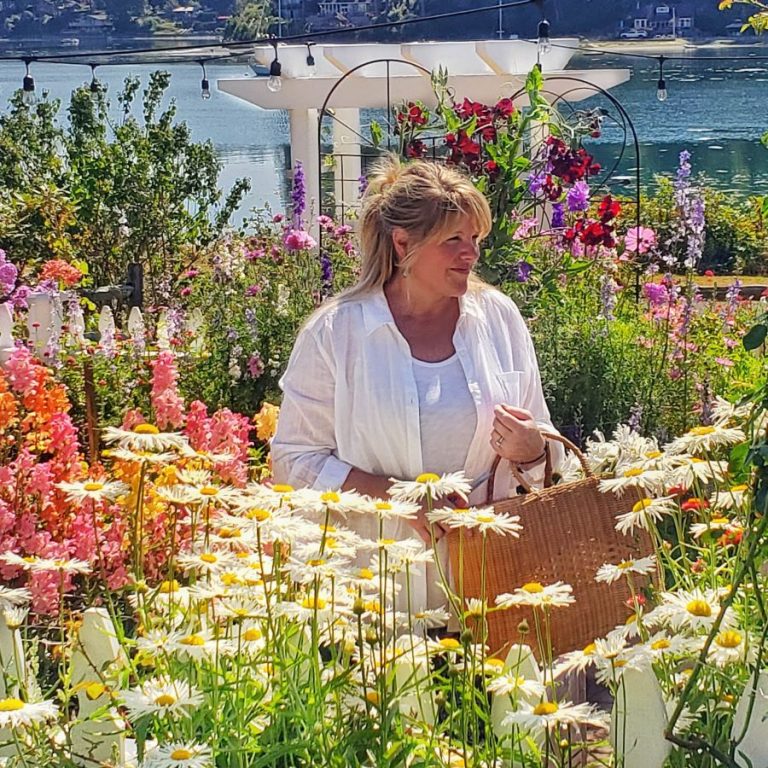
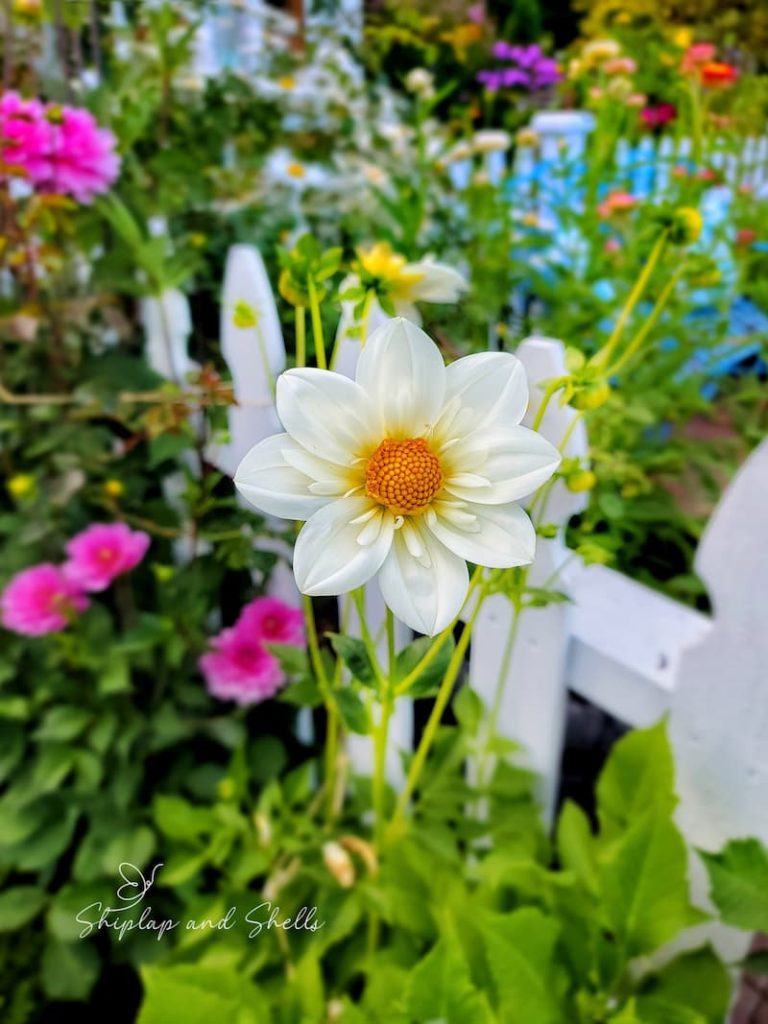
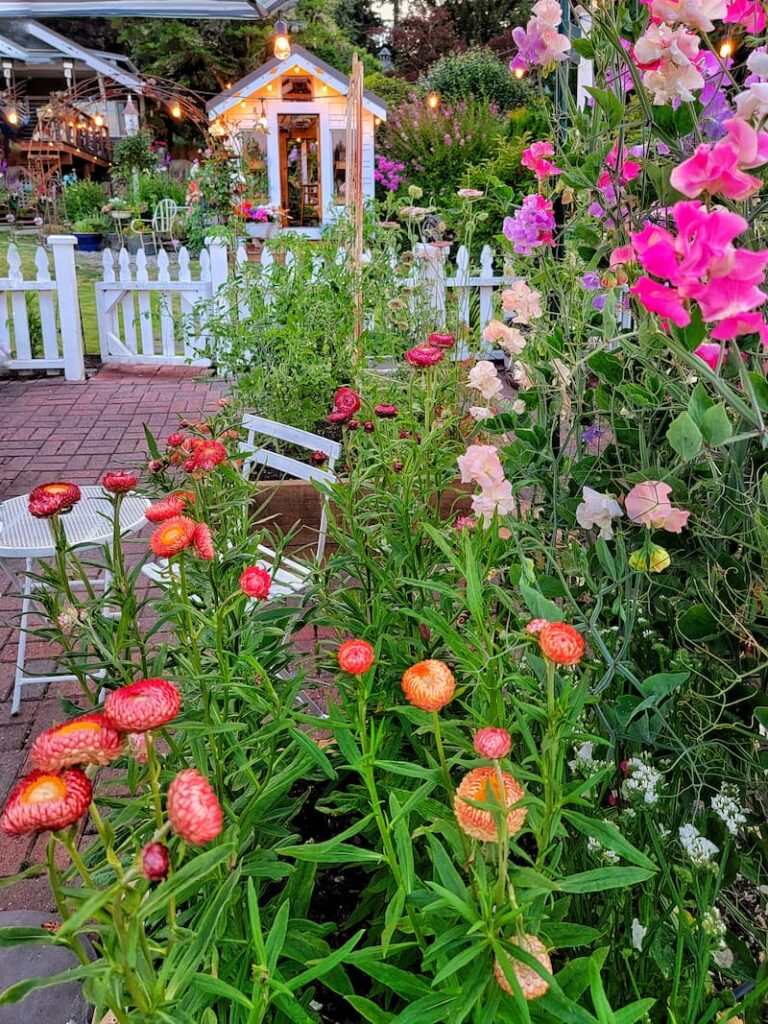

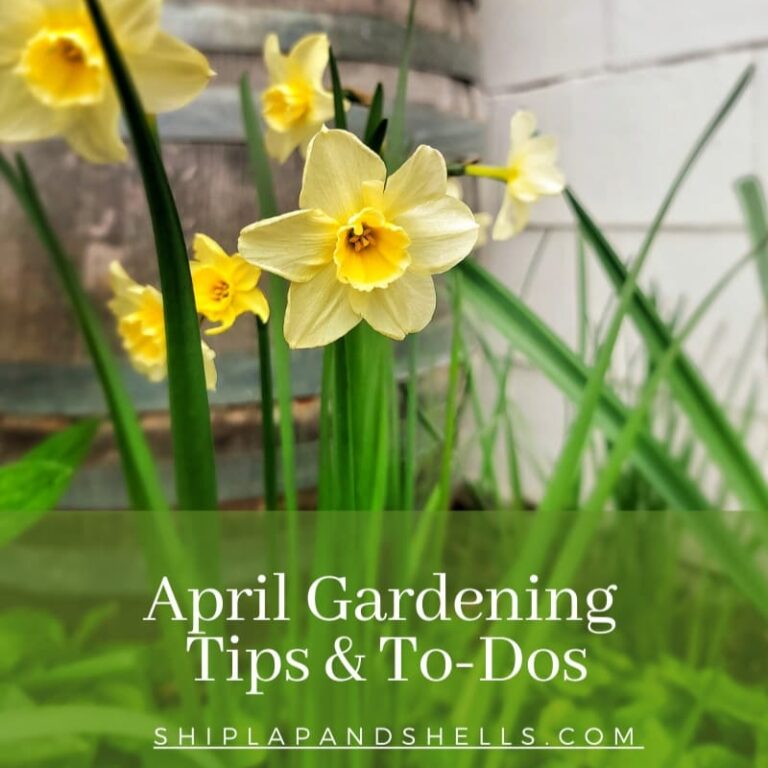
Kim
So many great tips. Thanks for sharing your knowledge with us.
Thank you for following along Rachel. I appreciate it so much!
Liked all your comments on different things like different flowers staking them, netting them trellis such great ideals. I’ve been gardening for about 50 years and it’s so nice to have someone teach younger gardeners the way to grow in love and treat nature. Keep up the good work.🌺 the past few years have been hard on me like this year I cannot garden at all because of health problems. Enjoy now about everything. Your golden years are when you’re young, not waiting for them to come in your older age. Don’t let anyone tell you that you can’t have,you can’t do and you can’t go. Find a way that you can. Don’t wait!!! Good luck in life and gardening 👩🌾
This is so helpful Kim! Thanks for sharing! I’m going to pass on to my followers in my Sunday Round Up post this weekend!